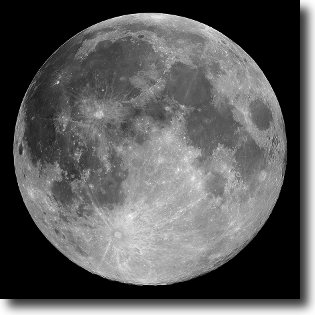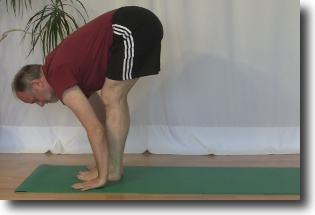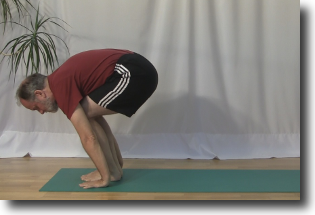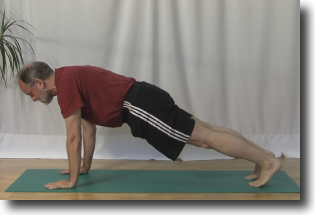Niel Armstrong said “One small step for a man. One giant leap for mankind.” as he jumped backwards off of the ladder of the Lunar Lander on to the surface of the moon. It was July 21, 1969 and Neil was the first person to land on the moon.
Alice watched as Niel jumped back off of the ladder and landed softly on the surface of the moon. Unlike Niel, she has been crash landing on her mat whenever she jumps back.
Alice is working on jumping back from standing at the front of the mat to lowering down into Chaturanga Dandasana and it is not going all that well.
What is Jumping Back
The movement back from standing at the front of the mat with your hands on the floor and your chest lifted down to Chaturanga Dandasana is called jumping back.
Jumping Back happens during Sun Salutes and during the Vinyasa sequence that connects poses in the Ashtanga yoga practice.
Jumping back helps you to develop agility in your body and mind. It builds bone density in your hip, thigh and spine. It strengthens your core muscles and you learn to be light on your feet and land softly.
Jumping Back occurs near the beginning of the Sun Salute Series and the Vinyasa sequence.
How to Jump Back
You start in Lifted Chest pose with your hands on the floor beside your feet and your chest and head lifted as you gaze down your nose towards the floor.
From here you bend your legs, lowering your hips and transfer most of your weight into your hands. Move your shoulders slightly forward over your finger tips.
Now exhale, engage Uddiyana Bandha and jump your legs all the way to the back of your mat. There is a gap of about the width of your two feet between your feet and only your toes are touching the floor.
You have your feet in the right place at the back of the mat when your arms are straight, your shoulders are directly above your wrists, and your body is in a straight line from your head through your shoulders, hips, and knees to your ankles. This position of the jump back is called High Plank. You do not stay here. As you continue to exhale you lower your body down towards the floor and hover just above the floor in Chaturanga Dandasana.
There are some problems to overcome before Alice can successfully do a Jump Back and land softly with her feet in the right place as she lowers down to Chaturanga Dandasana.
What are the challenges
There are several challenges with Jumping Back that Alice needs to overcome before she can land softly like Niel Armstrong when she jumps back including:
Lack of Strength
Jumping Back requires a strong abdomen and back. Engaging Uddiyana Bandha will help you to develop the strength that you need to lift your hips up and take your legs all the way back.
You also need a strong back to assist your abdomen in lifting your hips and moving them towards the back of your mat.
Crash Landing
Once you manage to jump all the way back you will discover that your feet are crashing to the floor with a big thud. You need to eliminate this thud and land softly.
First we will look at your lack of strength and then move on to eliminating the crash landing.
How to eliminate the challenges
Lack of strength
It did not take a lot of strength for Neil to jump back on the moon. All he had to do to accomplish that giant leap for mankind was to push off of the ladder and land softly on the surface of the moon.
The lower gravity on the moon insured that Neil landed softly. You on the other hand are not so lucky. No one is going to reduce the force of gravity for you so that you are all of a sudden super strong. You are going to have to develop your own core strength.
There are two things you can do to develop the strength you need to jump back and Uddiyana Bandha is one of them.
Engage Uddiyana Bandha
This is the lower abdominal lock which is just below your belly button. You find it by placing your thumb in your belly button and placing your hand directly below. It is these muscles just below your belly button that you are engaging when you do Uddiyana Bandha.
You bring firmness to these muscles of your lower abdomen by drawing your belly button in towards your spine and then up towards your ribs. This inward and upward motion of your belly button will cause the muscles of your lower abdomen and lower back to engage and bring more strength, energy and lightness to your practice.
Once you have Uddiyana Bandha figured out you can start working on the muscles of your upper back.
Lift your head and look forward
When you lift your head and look forward you cause the muscles of your neck, shoulders and upper back to become active and engaged. These muscles help to support your torso as you jump back.
Once you get these two actions in place you are ready to move on to the actual jump back. You can develop the strength you need in your torso to support you in your jump back by working through these two stages.
1 – walk back
Rather than attempting to jump your feet all the way to the back of your mat in one giant leap take a more casual approach and walk back. You can start with several small steps and over time you can replace them with larger and larger steps until you are getting your feet back in one giant step. Now it is time to move on to hopping.
2 – hop back
Now instead of moving one leg at time it is time to move both of your feet at the same time. At this stage you are not attempting to hop your feet all the way to the back of the mat, you are only planning on going part way and then walking or hopping again to get the rest of the way. As your strength increases you will find yourself hopping further and further back and coming closer and closer to your final destination. Eventually you move on to a full jump back.
Once you are jumping all the way back it is time to work on landing softly.
Crash landing
When Neil jumped back from the lunar lander and landed on the moon he did it very softly and he landed without a thud. It was very easy for him because on the moon he weighed about 1/6 of his normal weight and he could just float down to the moon’s surface.
When you first start jumping back rather than hopping or walking back you discover that your feet are crashing to the floor with a big thud. Your goal is to land softly with almost no sound.
Letting your feet crash to the floor when you jump back will cause injury to your lower back, knees, ankles and your toes. This is something that you want to avoid.
To get rid of the crash landing you continue to develop your core strength in your abdomen and back.
Bring your focus once again to Uddiyana Bandha. Engaging your lower abdominal muscles will increase the strength in your lower abdomen and back. This increased support from your lower back and abdominal muscles will help you to support the weight of your torso and control the descent of your feet to the floor.
Also lifting your head and looking forward rather than looking back at your feet adds additional strength to your back and further supports your attempts to land softly.
Over time as the strength of your back and abdominal muscles increases you will notice that you are landing softly on the floor.
Summary
Alice will know that she has accomplished her jump back when, like Neil Armstrong jumping back off of the lunar lander, her feet are landing far enough back and they are landing softly on the mat.
Use the walk back, hop back duo while you develop the strength you need in your body to support you jumping back all of the way.
Work with Uddiyana Bandha to land softly and eliminate the crash landing that could hurt your lower back.
Next Steps
Your yoga teacher can help you eliminate the crash landings from your jump backs. They can see what you can not see as you jump back and land in Chaturanga Dandasana.
Additional Reading
— Jumping Forward has a lot in common with Jumping Back. You can learn more by reading How to avoid the Donkey Kick trap as you Jump Forward in a Sun Salute.
— In the article How to avoid the Bowed-Leg Menace in your Sun Salute you learn how to protect your knees when you Jump back and forward.
— Once you are comfortable with Jumping Back you should look at doing a 108 Sun Salute celebration. To learn more about the 108 and the benefits read this article What are the 4 benefits of doing a 108 Sun Salute Celebration.








